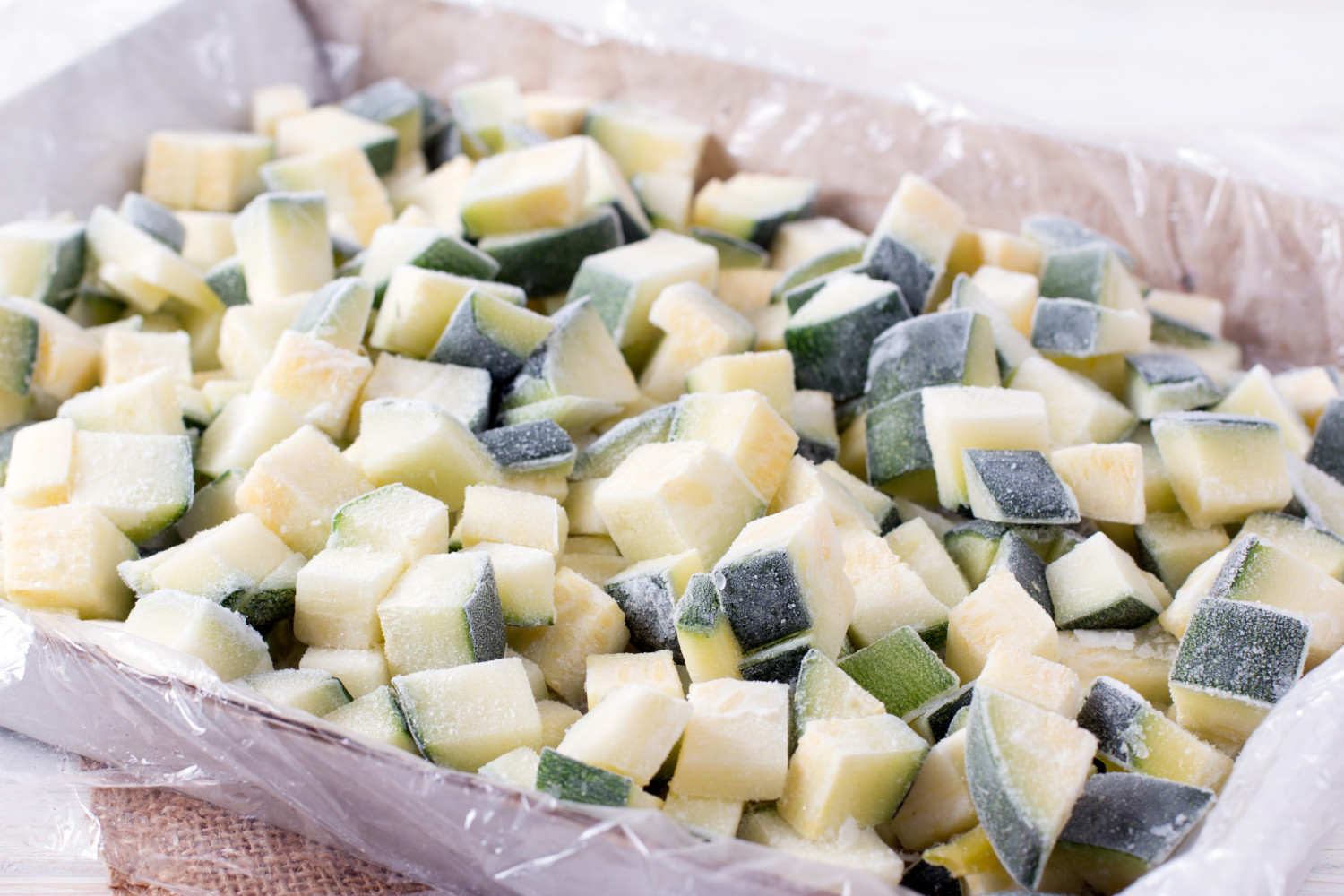Zucchini is rich in many nutrients, high in antioxidants and delicious in all sorts of recipes. It also grows quickly and abundantly, so if you have a patch of zukes in your garden or have had some of the squash bestowed upon you by your friend, neighbor or farm share, you might not know how to use it all while it’s still fresh.
You don’t have to choose between zucchini dishes every night and letting it go to waste. Although zucchini is considered a summer squash, freezing some as soon as you can lets you enjoy that just-picked freshness any time of the year.
Produce that you plan to cook freezes well, so plan to put away any zukes that you will roast, fry, steam or bake. The University of Missouri Extension recommends selecting young, tender squash for freezing, as the rinds will still be thin and the seeds will be small. Start by rinsing the zucchinis in cold water or giving them a soak in a vinegar and water mixture.

Next, determine how you plan to use the frozen veggies, as you need to prep them before continuing. For instance, you might chop some into bite-sized pieces, spiralize some into zoodles or shred some up for baking in quick breads and muffins.
Blanching the squash before freezing serves many purposes. It cleans the surfaces of the produce, gives it a brighter color, helps retain vitamins and slightly softens it for easier storage. It is important to time the blanching process well for the best results.
For every pound of squash that you want to freeze, bring one gallon of water to a boil. Toss the zucchini into the boiling water or place it in a blanching basket and submerge it into the pot. Cover with a lid and boil for one minute. Remove the zucchini from the pot and plunge it into ice water for one minute to stop the cooking process.

Flash-freeze the zukes by lining a baking sheet with parchment paper, spreading the pieces on it and freezing them until they’re solid. This keeps the pieces from sticking together. Store them in zip-top freezer baggies.
You can keep them in the freezer for eight to 12 months, taking out as much as you want when you need it. Cook it or add it to recipes straight from the freezer — no need to thaw it first.
This story originally appeared on Simplemost. Checkout Simplemost for additional stories.


